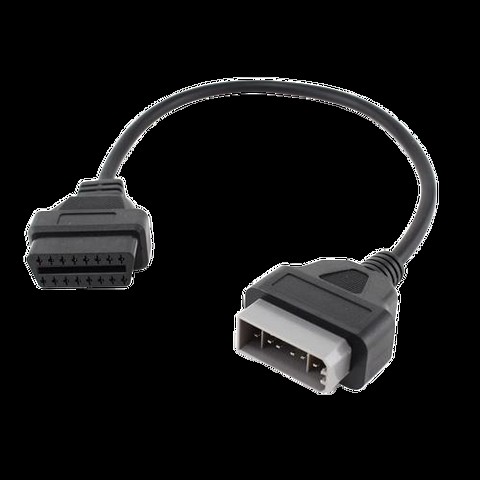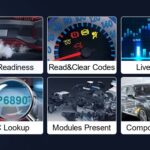Understanding your car’s diagnostic system is crucial, especially when you’re looking to use scan tools for troubleshooting or maintenance. A common question we encounter at carparteu.com is, “Do I Have Obd2 Or 1?” Let’s clarify the differences between OBD1 and OBD2 and help you determine which system your vehicle uses.
OBD stands for On-Board Diagnostics. These systems are designed to monitor and report on a vehicle’s performance and health. The two primary types you’ll encounter are OBD1 and OBD2. While OBD1 was used in older vehicles, even up to 2006 in some cases, OBD2 is the standard for most modern cars.
Generally, if your car is manufactured in 2006 or later, it will likely be OBD2. However, it’s not always that straightforward. Some vehicles produced before 2006 were already OBD2 compliant, while others from the same year might still use OBD1. For example, a 2003 Toyota Corolla is typically OBD1, whereas a 2004 Toyota Corolla is often OBD2. To check for sure and if you are still unsure “do i have obd2 or 1”, you can consult a vehicle-specific OBD2 car list for more detailed information.
https://premium-diagnostics.com.au/pages/obd2-car-list
OBD2 is considered a superior system compared to OBD1. It offers standardized diagnostic trouble codes and provides a more comprehensive range of data from the vehicle’s computer system. This standardization makes diagnosing issues easier and more consistent across different makes and models.
If your vehicle is equipped with OBD1, you’ll need a scan tool that is specifically compatible with OBD1 protocols. Standard, inexpensive OBD2 readers will not work with OBD1 systems. It’s important to note that a scan tool designed for OBD1 will typically also be able to read OBD2 systems. However, the reverse is not true; an OBD2-only scan tool cannot communicate with an OBD1 vehicle, even if you use an adapter.
The topic of adapters often causes confusion. Simply using an adapter does not magically make your OBD1 car OBD2 compatible. Adapters are only for physical connection purposes, allowing an OBD1 scan tool to connect to a non-standard OBD1 port. You still require a scan tool that is designed to read the OBD1 protocol.
Furthermore, some vehicles might have the OBD2 standard 16-pin connector but still operate on an OBD1 protocol. In these cases, an OBD2 reader will also fail to work. Always verify your vehicle’s OBD protocol to ensure compatibility with your diagnostic tools.
For vehicles using OBD1, adapter cables are often necessary due to the variety of non-standard OBD1 ports. The easiest way to check if you need an adapter is to locate your car’s OBD port. OBD1 ports are commonly found under the dashboard on the driver’s side, but some can also be located in the engine bay.
We supply a range of OBD1 adapter cabler here
For instance, older Nissan vehicles often require a 14-pin adapter cable.
The Nissan 14-pin Data Link Connector (DLC) is frequently located behind the fuse panel cover.
Toyota vehicles with OBD1 often utilize a 22-pin port, commonly found in the engine bay.
The correct adapter for this port type is the Toyota 22-pin OBD1 adapter.
Below is an example of the standard OBD2 port. OBD2 scan tools can plug directly into this 16-pin port without needing an adapter. However, remember that if your car is pre-2006, it’s essential to verify OBD2 compliance to confirm “do i have obd2 or 1” before assuming compatibility.
In conclusion, determining whether you have OBD1 or OBD2 is vital for selecting the correct diagnostic tools. While vehicle manufacturing year can be a general guide, it’s always best to double-check using a compatibility list or by visually inspecting your car’s diagnostic port. Understanding this difference will ensure you can effectively diagnose and maintain your vehicle.

